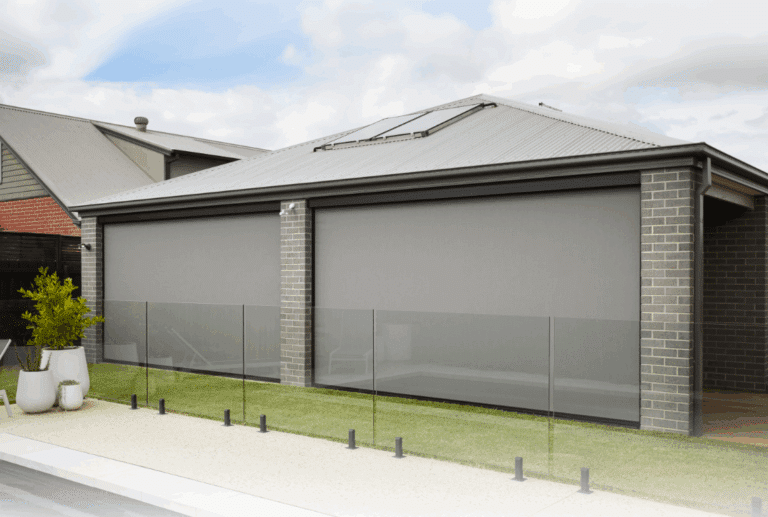If your 20s were all about figuring things out, jobs, housing, maybe even your first big loan, your 30s and 40s are where you start wanting a little less chaos and a little more control. Financial stability begins to take center stage.
But what exactly does “financial stability” mean? For some, it’s being debt-free. For others, it’s having savings that let them sleep at night. And for many, it’s simply knowing that no matter what life throws their way, they’ll be okay.
The truth is, financial stability isn’t about perfection or hitting a specific income level; it’s about progress, confidence, and having systems in place that support your long-term goals.
Let’s walk through what that looks like in your 30s and 40s, two decades where your money decisions can make all the difference.
Your 30s: Building the Foundation
Your 30s often feel like a juggling act: career moves, maybe starting a family, buying a home, or paying off lingering student debt. It’s a decade full of big decisions and even bigger responsibilities. But it’s also the best time to start laying the groundwork for long-term financial security.
The first step? Getting organized.
Start by creating a clear picture of where you stand, your income, debts, savings, and monthly expenses. It’s not always fun to look at the numbers, but clarity gives you control. Once you know exactly where your money’s going, you can make smarter choices about where it should go.
Build an Emergency Fund
Financial stability begins with safety. An emergency fund isn’t a luxury; it’s a lifeline. Aim to save at least three to six months’ worth of living expenses. Life happens: job changes, car repairs, medical bills, and having that cushion can prevent a short-term emergency from turning into long-term debt.
Start small if you need to. Even $50 or $100 per paycheck adds up faster than you think. The goal isn’t perfection; it’s momentum.
Tackle Debt Strategically
Debt doesn’t have to be scary, but it does need a plan. Focus on paying off high-interest balances first, like credit cards, while making consistent payments on everything else.
If student debt is still part of your financial story (and for many people in their 30s, it is), consider ways to make it easier to manage. You might look into options to consolidate student loans to simplify repayment and keep your financial focus on the bigger picture. Streamlining payments can reduce stress and free up space in your budget for other goals, like saving, investing, or finally taking that trip you’ve been putting off. The key is finding balance so your money works with you, not against you.
Debt management isn’t just about numbers; it’s about reducing stress and freeing up energy to focus on your future.
Start (or Grow) Your Retirement Savings
Your 30s are the perfect time to get serious about retirement savings, not because you’re old, but because time is your biggest advantage. The earlier you start, the more compound interest works in your favor.
If your employer offers a 401(k), contribute at least enough to get the company match; it’s basically free money. If you’re self-employed or your company doesn’t offer a plan, look into an IRA.
The key is consistency. Even small, regular contributions can grow into something substantial over time.
Your 40s: Strengthening the Structure
By the time you hit your 40s, you’ve probably built some financial muscle. You’ve got more experience, more stability, and maybe a higher income. But you’ve also got more moving parts, a mortgage, family expenses, maybe aging parents to support.
This decade is all about fine-tuning your strategy and protecting what you’ve built.
Refine Your Budget and Goals
Your expenses and priorities probably look very different from what they did ten years ago. That’s normal. Take time to revisit your budget and goals every year. Are your savings targets realistic? Are there subscriptions or costs that no longer make sense?
Think of your finances like a garden; they need regular pruning to stay healthy. Adjust as life changes, whether that means saving for college, planning a vacation, or preparing for retirement.
Focus on Debt Freedom
Your 40s are the perfect time to double down on debt reduction. Every dollar you pay off now gives you more flexibility later. If you still have lingering credit card or auto loan balances, create a focused payoff plan.
But don’t forget balance. Paying off debt matters, but so does saving for your future. The trick is to strike a healthy middle ground between eliminating what you owe and building what you’ll need.
Level Up Your Investing
If your 30s were about getting started, your 40s are about being strategic. This is when you can start thinking more intentionally about risk and growth.
Revisit your retirement portfolio and make sure it’s diversified, a mix of stocks, bonds, and other assets suited to your risk tolerance. If you’re not sure where to start, talking with a financial advisor can help you refine your approach.
And remember: investing isn’t just for retirement. Consider taxable investment accounts or real estate opportunities if your budget allows. The goal is to make your money work harder — not just sit there.
The Pillars of Long-Term Stability

So, what actually defines financial stability at this stage of life? It’s not just about your income or your net worth; it’s about the systems you’ve built and the peace of mind they create.
Here are a few pillars to focus on:
1. Savings You Can Rely On
A healthy emergency fund and ongoing retirement contributions are key. They provide stability, confidence, and flexibility, all things that matter more than ever in your 30s and 40s.
2. Manageable Debt (Not Zero Debt)
It’s okay to have some debt, a mortgage, a car loan, or student loans. The goal isn’t necessarily to be debt-free; it’s to make sure debt fits comfortably within your budget and doesn’t control your life.
3. Smart Investing
Your investments should grow steadily while reflecting your personal goals. Don’t chase quick wins; focus on long-term consistency.
4. Solid Protection
Financial stability also means protection. That includes health insurance, life insurance, and even disability coverage if your family depends on your income. The more prepared you are, the fewer financial surprises you’ll face.
5. A Healthy Money Mindset
At this point, mindset matters just as much as mechanics. Financial stability is about feeling confident in your plan, not constantly comparing yourself to others. Success looks different for everyone, and that’s okay.
Avoiding Common Money Traps
Even when you’ve built a solid foundation, it’s easy to fall into financial traps that sneak up on you. Here are a few to watch for:
Lifestyle Creep
As income rises, so do expectations. Suddenly, the car gets an upgrade, vacations get fancier, and your spending creeps up without you noticing. It’s okay to enjoy the fruits of your hard work, just make sure your spending aligns with your long-term goals.
Neglecting Retirement Contributions
It’s tempting to focus on short-term goals, paying off the house, funding your kids’ activities — but don’t neglect your future self. Retirement savings should remain a top priority, even when life feels busy.
Not Reviewing Your Finances Regularly
Your financial situation will evolve, and so should your strategy. Review your budget, investments, and insurance at least once a year. Life changes, and your plan should change with it.
Financial Freedom Over Perfection
Here’s the most important thing to remember: financial stability doesn’t look the same for everyone. Some people own a house; others prefer renting. Some prioritize travel; others focus on early retirement.
The key isn’t meeting someone else’s definition of success; it’s building a version of stability that fits your life, values, and goals.
Financial freedom doesn’t mean having it all figured out. It means knowing where you stand, having a plan, and feeling confident enough to adjust when things change.
So if you’re in your 30s or 40s and still figuring things out, that’s okay. You’re not behind. You’re learning, improving, and making progress, and that’s exactly what financial stability looks like.
Because at the end of the day, it’s not about chasing perfection. It’s about building peace of mind, one smart choice, one steady step, and one decade at a time.


















